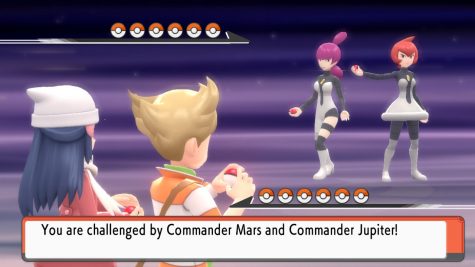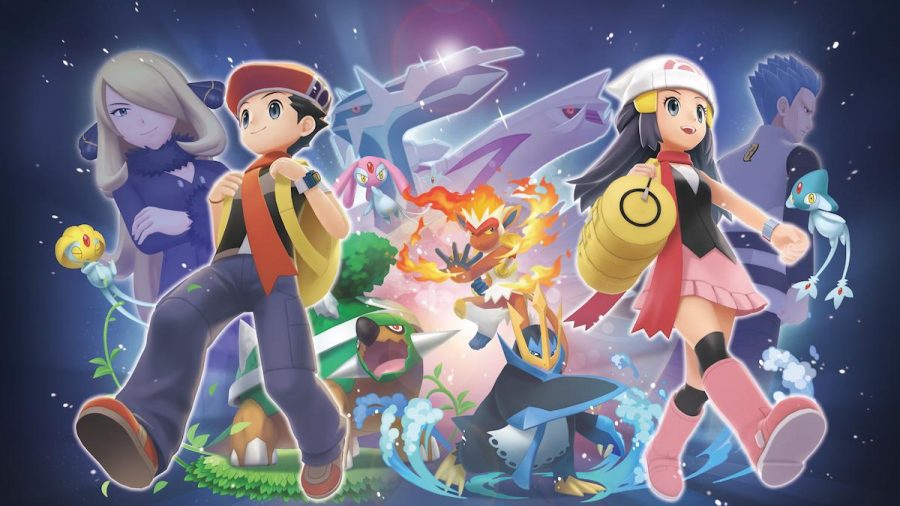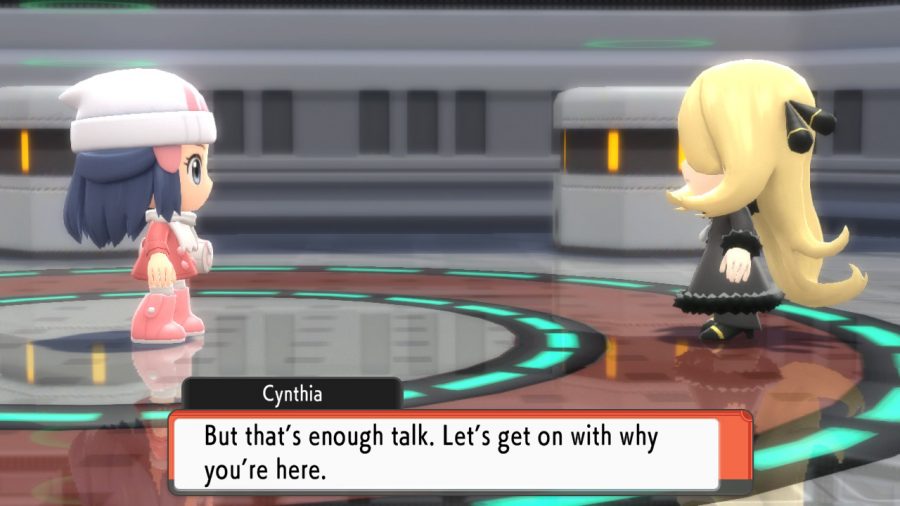‘Pokémon Brilliant Diamond’ and ‘Pokémon Shining Pearl’ are faithful to a fault
The remakes of the original Nintendo DS games are a refreshing reimagining, but stay disappointingly true to their inspirations
“Pokémon Brilliant Diamond” and “Pokémon Shining Pearl” are remakes of the original “Pokémon Diamond and Pearl” released in 2006. Photo | The Pokémon Company
November 28, 2021
he latest Pokémon games to grace the Nintendo Switch, “Pokémon Brilliant Diamond” and “Pokémon Shining Pearl,” are reimaginings of the original “Pokémon Diamond” and “Pokémon Pearl” adventures that debuted on the Nintendo DS in 2006. Released on Nov. 19 and helmed by developer ICLA, the two games follow the player, who chooses one of three starter Pokémon — Turtwig, Chimchar or Piplup — on their journey to become Champion of the Sinnoh region, which is inspired by Hokkaidō, Japan.
Unlike more recent titles like “Pokémon Sword” and “Pokémon Shield,” “Brilliant Diamond” and “Shining Pearl” keep battling simple. “Diamond” and “Pearl” were two of the last games of an era where the focus wasn’t on experimental and spectacle-heavy mechanics like Dynamax and Mega Evolution, which prolong the franchise’s already lengthy battles, and “Brilliant Diamond” and “Shining Pearl” stay true to that aspect, keeping battles easy to understand with turn-based gameplay.

There is something infinitely satisfying about returning to a classic gameplay loop where winning battles relies on pure strategy. Without experimental mechanics, battles come down to who has the best understanding of moves, type advantages and battle items, and victory over opponents feels rightfully earned, a rare experience in 2019’s “Sword” and “Shield” with Dynamax.
For gameplay, the original games displayed an overhead 2D sprite style on the DS, and ICLA cleverly utilizes the Switch’s 3D capabilities to create an inspired retro chibi design that pays homage to the oversized heads and proportionally tiny bodies that the sprites had. In battle, the chibi style seamlessly transitions into the more realistic and anime-reminiscent models and battlegrounds used in battles for “Sword” and “Shield.”
From the shadows of clouds overhead to the saturated colors of the day-night cycle, “Brilliant Diamond” and “Shining Pearl” successfully deliver a vibrant world that blends the realistic setting of Hokkaidō with fantasy. Floaroma Town, for example, is based on Biei Town and Furano City with its expansive floral gardens, while the imposing Mount Coronet resembles the Ezo Mountain Chain.
“Diamond” and “Pearl” arguably boasted some of the best themes and soundtracks, adding a lively atmosphere to battles and scenery, and the remakes affectionately remaster them. From Jubilife City’s upbeat and jazzy piano motifs backed by saxophone, which highlight the feeling of a populated yet peaceful metropolis, to Champion Cynthia’s iconic piano theme, which harks back to classical music’s Romantic era and foreshadows the difficulty of a battle with the Champion, the music of “Brilliant Diamond” and “Shining Pearl” truly enhances the overall experience.
Besides the main story, “Brilliant Diamond” and “Shining Pearl” also provide a substantial variety of side activities and endgame tasks that add dozens of hours to the initial game. The original games’ Underground, a sprawling subterranean labyrinth where players could explore, mine and meet other players, has been renovated with multiple new habitats which contain hundreds of different species to catch as a fulfilling side quest.
However, “Brilliant Diamond” and “Shining Pearl” are overall meticulously faithful remakes, and that unfortunately means they come with the limitations of 15-year-old games. The franchise historically utilizes a tedious leveling system for Pokémon to scale difficulty in its RPGs, and “Sword” and “Shield” introduced quality of life changes to lessen the grind. The remakes ignore this improvement, sticking to the outdated leveling system of a past era.

Unlike their media counterparts, Pokémon games also have a decade-long track record of threadbare stories, and “Brilliant Diamond” and “Shining Pearl,” being remakes of 2006 games, are no exception. Prominent characters like Gym Leaders are underdeveloped compared to recent games like “Pokémon Sun” and “Pokémon Moon,” which made an effort to improve story progression and character personalities.
Though the artistic direction is a fitting callback to “Diamond” and “Pearl,” it detracts from the gravity of certain events during the story, with the main antagonist’s threatening monologue in particular being ruined by the chibi style. Graphics also took a step backward compared to the standards set by 2019’s “Sword” and “Shield,” which took full advantage of the Switch’s engine to create a detailed world that could be called next generation.
The franchise has ultimately always been about the magic of catching, raising and battling new Pokémon, and “Brilliant Diamond” and “Shining Pearl” embody that concept in essence despite their limitations. Past their regretful ignorance of much-needed modern changes, “Brilliant Diamond” and “Shining Pearl” are an equal mix of classic elements and welcome revamps, and preserve the simplistic appeal that made the original “Diamond” and “Pearl” so loved.
Rating: 3.5/5





























